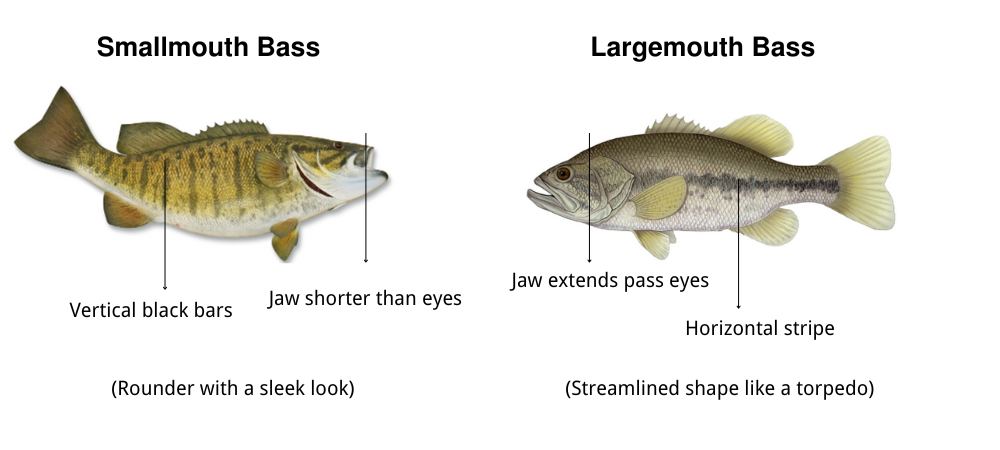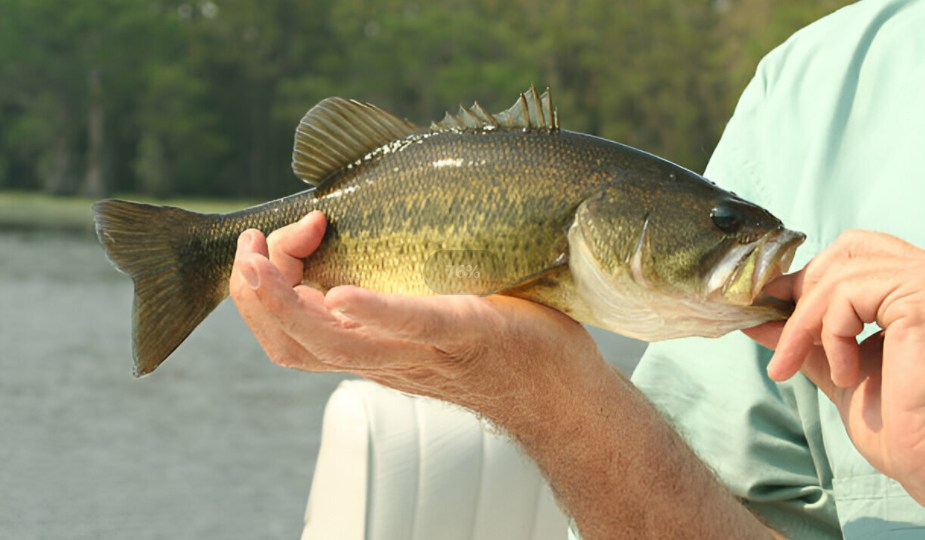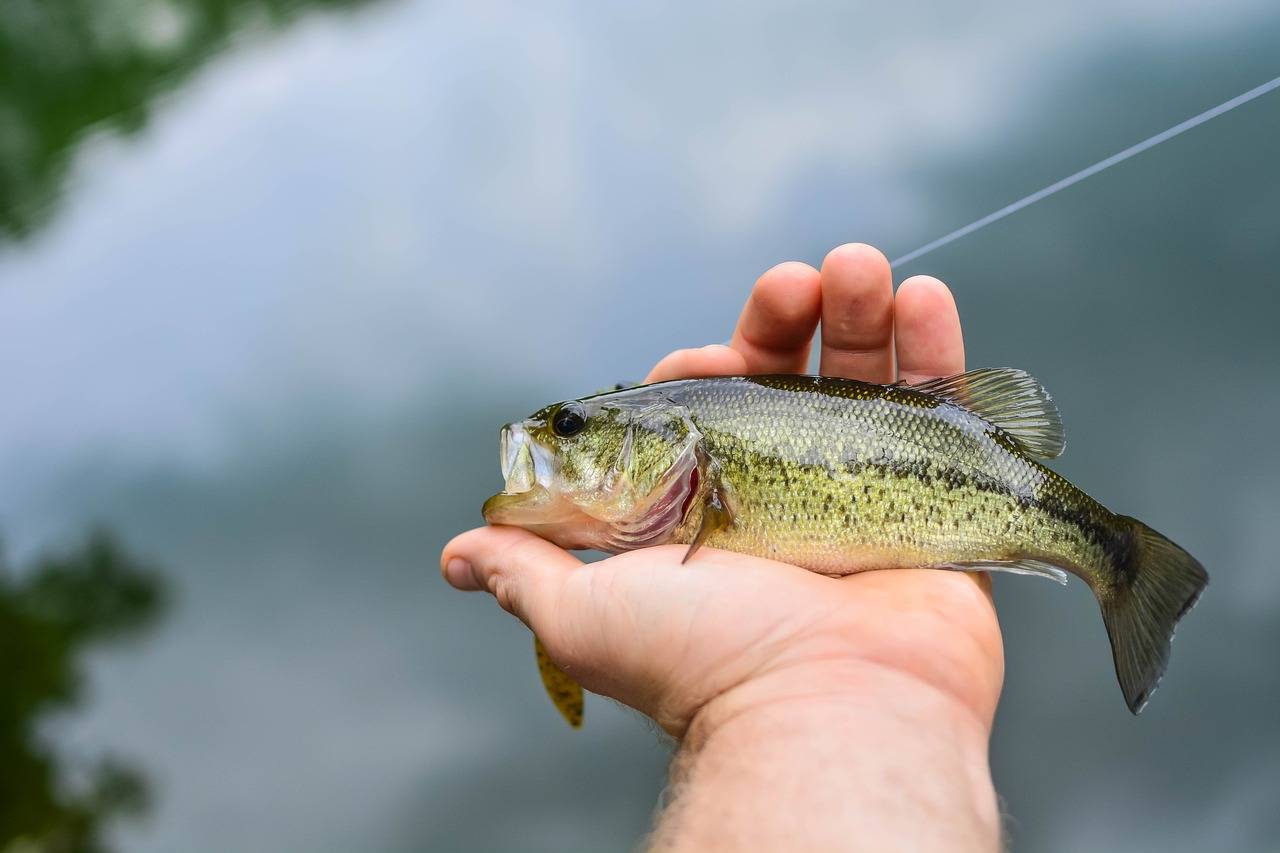Faced with the challenge of differentiating a largemouth bass from a smallmouth bass, how do you discern which one you caught? Don’t worry, angler! We offer a comprehensive guide, where we take you into the world of these two sport fishes and explore the differences between largemouth and smallmouth bass.
We’re going to compare the main variants between the largemouth and small-mouth bass, from the size and color down to the habitat and the angling tricks.
Whether you’re a pro or a beginner, this must-have resource will get you everything you need to separate the saltwater bass species.
Differences Between Largemouth And Smallmouth Bass
Largemouth and smallmouth bass are popular sport fish but have some key differences. The easiest way to tell them apart is their mouth and stripes.
Largemouth bass have a larger mouth that extends past their eye, and horizontal stripes. Smallmouth bass have a smaller mouth that fits within their eye socket and vertical stripes.
Here’s a deeper dive into their differences:
- Size/Color: Largemouth bass can grow larger, up to 16-24 inches, and are generally darker green or brown with horizontal stripes. Smallmouth bass typically reach 10 pounds and are brown with vertical stripes, earning them the nickname “bronzeback.”
- Appearance: Largemouth bass have a wider jaw and a separated dorsal fin. Smallmouth bass have a more slender body, a connected dorsal fin, and a redder eye.
- Taste: Both fish have a mild, sweet flavor. Some find largemouth bass slightly fishier, while smallmouth are considered slightly more flavorful.

World Records Of Smallmouth And Largemouth Bass
The International Game Fish Association (IGFA) keeps tabs on a wide variety of fishing records, including those for largemouth and smallmouth bass.
The record largemouth bass, a whopping 22.04-pound fish, was caught in southern Georgia in 1932 by George Perry.
On the smallmouth side, the record belongs to an 11.15-pound fish reeled in by angler David Lee Arp on Table Rock Lake, Missouri in 1955.
How To Catch Largemouth Vs Smallmouth Bass?
Largemouth and smallmouth bass are popular sport fish, but they have some behavioral differences. Here’s a breakdown to help you catch both:
Where to Find The Bass
- Largemouth Bass
Choose fish that love warm and calm water such as lakes and ponds. They prefer to stay in the cover of any of the buildings where they can easily jump at the prey. For example, it may consist of weed beds, fallen trees or docks, overhanging shrubs, and rocks. Casually located near the shore. In the summer, they can hide or retreat underneath stems and leaves that float above to escape the heat.
- Smallmouth Bass
Prefer cooler and flowing waters like streams and rivers with rocky beds. They tend to bear the base around structures similar to walls, ramps, drops, and current breaks. In lakes, they tend to be found in rocky shorelines, islands, or locations that abruptly drop off to deeper waters. They tend to stay out in the open more than the largemouth bass found in heavy cover.
When to Fish Bass
Bass are generally active year-round, but their feeding activity varies with water temperature.
Spring
In the spring, when water heats up from the winter, bass become more active and begin feeding voraciously to get back the energy that had been depleted during the cold period.
This period, known as pre-spawn, is favorable for catching bass, especially the larger female ones that intend to increase their mass before spawning. This usually happens in late March.
Summer
Bass fishing in the summer can still be rewarding, early in the mornings and towards the evenings when the waters are cooler. They usually stay in the depths of the water and look for the shade or the water that is cooler at this time of the day.
The best months are generally in April and May.
Winter
When the water temperature starts to drop in fall, basses become active again, preparing themselves for the winter to come. Each fall feeding frenzy is, in turn, an excellent bass fishing season as well.
The winter season may seem to be the most challenging time for bass fishing, but determined anglers can still catch some fish by employing deep jigging techniques. With the right strategies and patience, anglers should still successfully fish bass during the winter months, such as December and January.
Best Baits for Bass
Choosing the right bait is crucial for successful bass fishing. Each species of bass may respond differently to various baits, so it’s essential to know which ones are most effective for your targets.
For Both: Live bait like worms, minnows, and crawfish are always effective.
For Largemouth Bass: Large jigs, spinnerbaits, crankbaits, and topwater frogs are good choices.
For Smallmouth Bass: Try jigs, and drop shot rigs with soft plastics, crankbaits, and spinnerbaits. Use lighter lines (less visible) in clear water.
Fishing Tips for Largemouth Bass
- Focus on flipping and pitching lures into heavy cover. This requires carefully positioning your bait in the most productive and difficult-to-access areas where bass frequently conceal themselves.
- Work your lures slowly and erratically to entice them out. Largemouth Bass are usually predatory and are easily attracted to artificial lures that mimic their prey.
Fishing Tips for Smallmouth
- Fish along rock structures and drop-offs with jigging or dragging techniques. These techniques are highly effective because smallmouth bass are attracted to these underwater landscapes.
- Smallmouths tend to be more aggressive feeders, so a faster retrieve can work well.

FAQs For Smallmouth And Largemouth Bass
Are smallmouth or largemouth more aggressive?
Smallmouth bass are often more fiercely territorial, especially during spawning. They offer a strong fight when caught, making them a popular choice for sport fishing, so some anglers think the smallmouths are even more tenacious opponents.
What color lures do smallmouth bass like?
The most effective lure color for smallmouth bass changes based on water clarity and the kind of natural food it usually feeds on. In water where light penetrates properly and one can see clarity, a silver or white flash on a lure depicting a bait fish can be very successful.
In muddy water, contrasting colors such as chartreuse or fire tiger may be easily seen by the bass to retrieve. Spying the forage that dwells near your fishing terrain can be very instrumental in the colors you select.
What is the lifespan of a smallmouth bass?
In normal ecosystems, they usually live 6 to 7 years, while some may reach the age of 15 in the US. The lifespan of some smallmouth bass that breed in cold Canadian waters is over two decades since their growth rate decreased.
The lifespan of a smallmouth bass can vary considerably with its habitat, water quality, and competition for food and resources among individuals.
What is the best bait for smallmouth bass?
The use of live bait, such as minnows and crayfish, is the most effective lure to catch smallmouth bass since they closely resemble the natural food of bass. While there are many different types of lures, traditional lures like jigs, crankbaits, and spinner baits that mimic the sounds and movements of live bait have proven to be just as effective.
Can smallmouth and largemouth live together?
Indeed, smallmouth and largemouth bass can share living places that have big amounts of water, like lakes and reservoirs, under the condition that there is good enough habitat for both fish.
Smallmouths like to gather in rocky places that are cool and in the flow of the water, whereas Largemouth mostly dwell in weed beds and calm areas. This habitat diversity provides them with the ability to specialize within the same ecosystem.
How big do smallmouth bass get?
Smallmouth bass usually get to a 12-18 inch range in length, and approximately 12 Pounds in weight. Smallmouths live up to their names, not being as big as their largemouth relatives yet being famous for their energetic struggles and tasty white flakes.
How long can largemouth bass live?
Largemouth bass typically live anywhere from 6 to 7 years. Both smallmouth and largemouth bass can live for quite a while! In healthy waters with good food sources.
Conclusion
Overall, largemouth and smallmouth bass are favorite targets with some distinct attributes. I bet you have learned the big differences between them now. Largemouth bass are darker with horizontal stripes, while smallmouth bass have vertical stripes and are more frequently found in cooler and swift-moving waters.
They may be taken either on year-round live baits or with lures that mimic their food items. When their habitat is preserved and adequate food is provided, bass species can live up to 6 – 7 years and some even reach 15 years with ideal conditions.
Whether you favor large-mouth or small-mouth bass, knowledge of their habitat or behavior plays a major role in whether you have a good fishing trip or not.



















Leave a reply